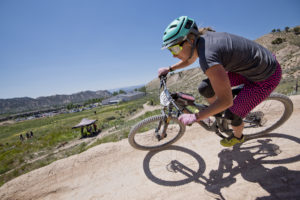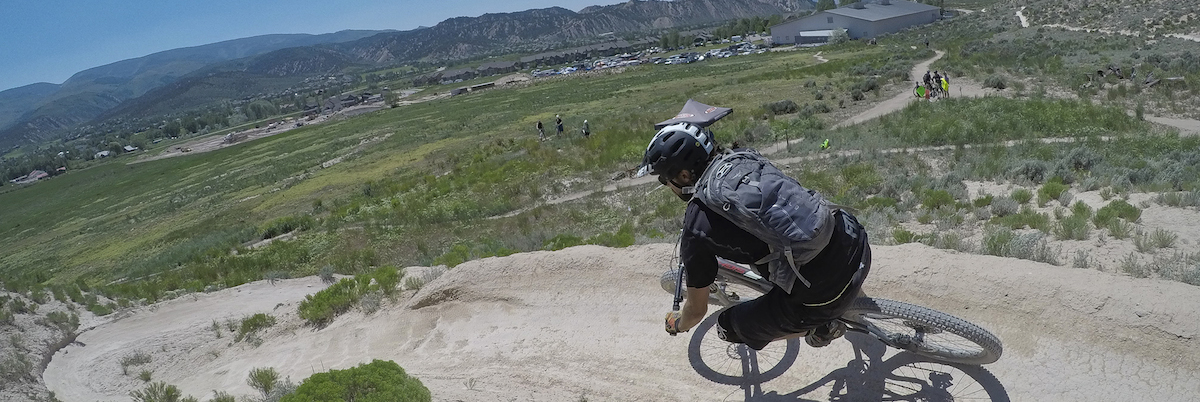Posted by: Shauna Farnell
Yes, it’s a long ride for a short race, but you’ve probably got the perfect bike for it …
By Shauna Farnell
Racing on fat tires has been a popular pastime for decades. And while there are plenty of races in which the fastest rider from point A to point B wins – be it road cycling, cross-country or downhill – the format of Enduro adds an extra challenge. The fastest rider from the starting line to the finish line isn’t necessarily the winner.
“The trick to be really competitive is having energy when the clock starts,” says local rider Mike Harms, who has competed in the GoPro Mountain Enduro the past two years. “Obviously, when you have three difficult climbs, a five-hour day and 80-plus-degree weather, saving your energy and being ready for the downhill is key. As a local, you know some of the downs have quite a bit of pedaling, so you have to be able to maintain speed as well.”
In spite of the five-hour day on the bike, only three descents are timed for the GoPro Mountain Enduro in Eagle, meaning the actual race ranges between 22 and 26 minutes. The format doesn’t really suit downhill specialists, however, because as Harms points out, those racers still have to possess the fitness level to reach the timed starting lines throughout the course.

“I’m not a particularly strong descender and that’s what this one’s all about. It gets you out of your comfort zone,” says local cross-country racer Roger Mitchell, who notched his first Enduro race on Friday. “On a normal long ride, I’ll beat everyone to the top of the hill and then be able to beat them down, but if I stop and wait for my friends, I’ll be eating their dust on the downhill.”
When the Big Mountain Enduro series began several years ago, the majority of competitors were pro racers – downhill and cross-country. Every year, Event Director Mike Day has seen more every day riders giving it a try.
“We have a lot of young kids here this year,” Day said of the Eagle race. “The women’s field and kids field grow huge every year. We had a 10-year-old in the Durango race, competing with his dad. He rode every stage, out there for five hours.”
Consequently, bikes are now being designed to suit not only every day riders, but are also ideal Enduro racing. When purchasing a mountain bike, buyers can choose between downhill and cross-country, or the “trail” bike that is a hybrid of both – light enough to climb but with enough beefed up suspension and fatter tires to make for a safe, smooth descent.
“Equipment is getting awesome. Like skis over the last 20 years getting all this camber and turning themselves. Bikes are the same,” Mitchell says. “I’m racing with a plus-size tire that might not be as fast uphill, but I feel super safe descending on it.”
These are the priorities of numerous bikers – racing or not. They’ll sacrifice a little speed on the climb for the confidence a solid bike delivers on a hairiy descent.
“You couldn’t come do an Enduro without any fitness and be competitive in the end. You need to have some downhill skills at the same time,” Harms says. “Enduro racing has been around for a long time, but it’s come into the spotlight on the world stage because it’s made brands focus energy on that middle-of-the-market bike, which is what people generally ride.”
Share this Story:






















